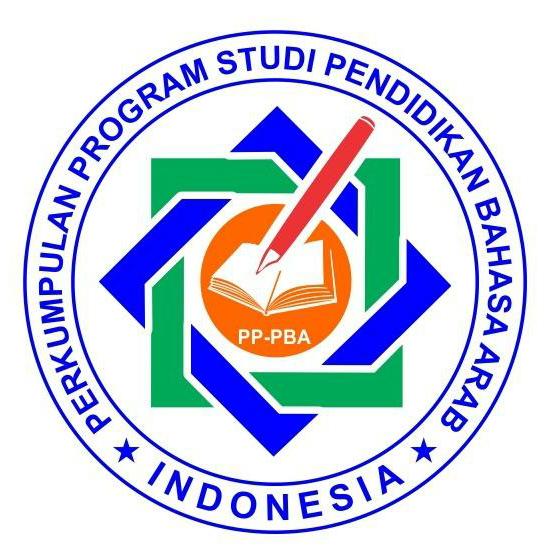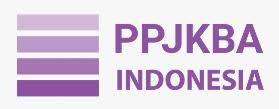Multicultural-Based Communication Strategies in Language Teaching
DOI:
https://doi.org/10.37680/aphorisme.v6i2.7811Keywords:
Multicultural communication, language teaching, culturally responsive pedagogy, intercultural competence, inclusive education, indonesiaAbstract
This study explores the role of multicultural communication strategies in language teaching, emphasizing the importance of culturally responsive pedagogy in addressing the diverse backgrounds of learners. Drawing on a qualitative library research method, this work synthesizes existing literature to construct a conceptual framework that highlights the integration of cultural identity, responsive interaction, and inclusive content in language education. This study uses a qualitative library research method to examine multicultural communication strategies in language teaching. Data were gathered from credible academic sources through systematic literature searches using relevant keywords. The analysis applied qualitative content analysis to identify themes related to cultural identity integration, responsive teacher-learner interactions, and inclusive curricula, resulting in a conceptual framework for fostering culturally responsive pedagogy in diverse classrooms. Findings indicate that effective communication in multicultural classrooms extends beyond linguistic instruction to include intercultural competence and sensitivity to students’ cultural norms, values, and communicative styles. The study identifies both the benefits and challenges of implementing such strategies, noting that while they enhance student engagement and learning outcomes, their application is often hindered by a lack of institutional support, teacher training, and adaptable curricula—particularly in contexts like Indonesia. This research advocates for comprehensive teacher development, curriculum reform, and reflective practices that empower educators to bridge linguistic and cultural divides. Ultimately, the study underscores the need for pedagogical models that foster inclusive, equitable, and culturally affirming learning environments in 21st-century language classrooms.
References
Alwasilah, A. C. (2013). Pendidikan Bahasa dan Sastra Berbasis Budaya. Jurnal Pendidikan Bahasa dan Sastra, 13(1), 1–15. https://doi.org/10.17509/bs_jpbsp.v13i1.1234
Banks, J. A. (2016). Cultural Diversity and Education: Foundations, Curriculum, and Teaching (6th ed.). Routledge.
Byram, M. (1997). Teaching and Assessing Intercultural Communicative Competence. Multilingual Matters.
Cummins, J. (2000). Language, Power and Pedagogy: Bilingual Children in the Crossfire. Multilingual Matters.
Cummins, J. (2017). Teaching for Transfer: Challenging the Two Solitudes Assumption in Bilingual Education. In O. García, A. M. Y. Lin, & S. May (Eds.), Bilingual and Multilingual Education (pp. 103–115). Springer. https://doi.org/10.1007/978-3-319-02258-1_8
dan, N., Yang, T., Islam, P., Dakwah, F., Islam, U., & Saifuddin, N. K. H. (2024). Peran Bahasa dalam Komunikasi Lintas Budaya: Memahami. Jurnal Paedagogy, 4(2), 1–14.
Deardorff, D. K. (2006). Identification and Assessment of Intercultural Competence as a Student Outcome of Internationalization. Journal of Studies in International Education, 10(3), 241–266. https://doi.org/10.1177/1028315306287002
García, O., & Kleifgen, J. A. (2018). Educating Emergent Bilinguals: Policies, Programs, and Practices for English Learners (2nd ed.). Teachers College Press.
García, O., & Wei, L. (2014). Translanguaging: Language, Bilingualism and Education. Palgrave Macmillan.
Gay, G. (2018). Culturally Responsive Teaching: Theory, Research, and Practice (3rd ed.). Teachers College Press.
George, A. L., & Bennett, A. (2005). Case Studies and Theory Development in the Social Sciences. MIT Press.
Hamied, F. A. (2012). English in Multicultural and Multilingual Indonesian Education. Indonesian Journal of Applied Linguistics, 1(1), 36–48. https://doi.org/10.17509/ijal.v1i1.97
Hammond, Z. (2015). Culturally Responsive Teaching and the Brain: Promoting Authentic Engagement and Rigor Among Culturally and Linguistically Diverse Students. Corwin Press.
Hastuti, W., & Suharto, T. (2020). Pengembangan Kompetensi Komunikasi Antarbudaya dalam Pembelajaran Bahasa Indonesia. Jurnal Pendidikan dan Kebudayaan, 5(1), 45–56. https://doi.org/10.24832/jpnk.v5i1.1423
Hidayat, N. (2019). Komunikasi Multikultural: Perspektif Indonesia. Syi’ar: Jurnal Ilmu Komunikasi, Penyuluhan dan Bimbingan Masyarakat Islam, 2(2), 76–83. https://doi.org/10.37567/syiar.v2i2.576
Ismail, N., & Rashid, R. A. (2017). Multicultural Education Practice in Malaysian Schools: Teachers’ Challenges and Needs. Malaysian Online Journal of Educational Sciences, 5(3), 11–19.
Karim, H. (2018). Multikulturalisme dalam Pendidikan Bahasa: Upaya Menumbuhkan Sikap Toleransi di Sekolah. Jurnal Pendidikan dan Kebudayaan, 3(2), 145–156. https://doi.org/10.24832/jpnk.v3i2.1024
Kramsch, C. (1998). Language and Culture. Oxford University Press.
Kumar, R. (2020). Multicultural Education and Language Teaching: An Indian Perspective. Journal of Indian Education, 46(2), 15–28.
Ladson-Billings, G. (1995). Toward a Theory of Culturally Relevant Pedagogy. American Educational Research Journal, 32(3), 465–491. https://doi.org/10.3102/00028312032003465
Lee, E., & Canagarajah, S. (2019). The Politics of Translingualism. In S. Canagarajah (Ed.), The Routledge Handbook of Migration and Language (pp. 126–140). Routledge.
Lucas, T., & Villegas, A. M. (2013a). Preparing Linguistically Responsive Teachers: Laying the Foundation in Preservice Teacher Education. Theory Into Practice, 52(2), 98–109. https://doi.org/10.1080/00405841.2013.770327
Lucas, T., & Villegas, A. M. (2013b). Preparing Linguistically Responsive Teachers. Educational Researcher, 42(2), 100–107. https://doi.org/10.3102/0013189X12464078
Mahmud, M. M. (2020). Intercultural Communication Competence: A Malaysian Perspective. Journal of Nusantara Studies, 5(1), 27–44. https://doi.org/10.24200/jonus.vol5iss1pp27-44
Mustain, M. (2025). Pembelajaran Inklusif: Peran Komunikasi Multikultural dalam Menangani Keragaman Budaya di Lingkungan Sekolah. Pedagogia: Jurnal Keguruan dan Pendidikan. https://doi.org/10.010125/8vazds63
Nieto, S., & Bode, P. (2018). Affirming Diversity: The Sociopolitical Context of Multicultural Education (7th ed.). Pearson.
Nordin, H., & Samad, A. A. (2011). Teacher Trainees’ Intercultural Competence: A Malaysian Perspective. Journal of Language and Culture, 2(1), 44–54. https://doi.org/10.5897/JLC.9000011
Paris, D. (2012). Culturally Sustaining Pedagogy: A Needed Change in Stance, Terminology, and Practice. Educational Researcher, 41(3), 93–97. https://doi.org/10.3102/0013189X12441244
Putra, A. P., & Nuraini, I. (2021). Dialogic Pedagogy in Indonesian Language Learning: Building Intercultural Competence Through Classroom Interaction. Jurnal Ilmu Pendidikan, 27(2), 112–123. https://doi.org/10.21831/jip.v27i2.37821
Rohman, A. (2018). Integrasi Pendidikan Multikultural dalam Pembelajaran Bahasa di Sekolah Dasar. Jurnal Pendidikan Multikultural, 6(2), 101–115. https://doi.org/10.24036/jpm.v6i2.1245
Safitri, L., & Wismanto, A. (2024). Culturally Responsive Teaching Pemahaman Budaya pada Pembelajaran Teks Hikayat. Transformatika: Jurnal Bahasa, Sastra, dan Pengajarannya, 9(1). https://doi.org/10.31002/transformatika.v9i1.1480
Santoso, H. (2019). Pendidikan Multikultural dalam Pembelajaran Bahasa Indonesia di Sekolah Dasar. Jurnal Pendidikan Bahasa dan Sastra Indonesia Metalingua, 4(2), 101–111. https://doi.org/10.21107/metalingua.v4i2.6486
Santoso, S. (2019). Code-Switching in Multilingual Classrooms: Practices and Functions. Indonesian Journal of Applied Linguistics, 9(2), 351–362. https://doi.org/10.17509/ijal.v9i2.20237
Sharma, P., & Singh, A. (2021). Inclusive Pedagogy in Indian Multilingual Classrooms: Challenges and Opportunities. International Journal of Multilingual Education, 7(1), 45–59.
Sharma, S., & Singh, R. (2020). Multiculturalism and Language Pedagogy: Challenges and Perspectives in Indian Classrooms. Journal of Language and Linguistic Studies, 16(2), 456–467. https://doi.org/10.17263/jlls.759843
Sleeter, C. E. (2012). Confronting the Marginalization of Culturally Responsive Pedagogy. Urban Education, 47(3), 562–584. https://doi.org/10.1177/0042085911431472
Suparlan, P. (2002). Menuju Masyarakat Madani: Peranan Pendidikan dalam Pembangunan. Jurnal Antropologi Indonesia, 26(65), 56–66.
Suparlan, P. (2002). Menuju Masyarakat Madani: Peranan Pendidikan dalam Pembangunan. LP3ES.
Suryani, N. (2017). Teacher Reflexivity and Multicultural Awareness in Language Teaching. Jurnal Pendidikan Bahasa dan Sastra, 17(1), 54–66. https://doi.org/10.17509/jpbs.v17i1.8124
Widiati, U., & Cahyono, B. Y. (2016). The Teaching of EFL Speaking in the Indonesian Context: The State of the Art. Jurnal Ilmu Pendidikan, 14(3), 262–276. https://doi.org/10.17977/jip.v14i3.23
Yew Pei Jia, & Nasri, N. M. N. (2019). A Systematic Review: Competence of Teachers in Implementing Culturally Responsive Pedagogy. Creative Education, 10(12), 3118–3130. https://doi.org/10.4236/ce.2019.1012236
Zakaria, N., & Jamaluddin, S. (2017). Multicultural Education in Malaysia: Issues and Perspectives. Journal of Education and Social Sciences, 7(1), 23–31.
Zed, M. (2004). Metode Penelitian Kepustakaan. Yayasan Obor Indonesia.
Downloads
Published
Issue
Section
License
Copyright (c) 2025 Arif Ma'mun Rifa'i, Sadiran Sadiran, Luluk Muasomah

This work is licensed under a Creative Commons Attribution-NonCommercial 4.0 International License.
Authors who publish with this journal agree to the following terms:
Authors retain copyright and grant the journal right of first publication with the work simultaneously licensed under a Creative Commons Attribution-NonCommercial 4.0 International License that allows others to share the work with an acknowledgement of the work's authorship and initial publication in this journal.
Authors are able to enter into separate, additional contractual arrangements for the non-exclusive distribution of the journal's published version of the work (e.g., post it to an institutional repository or publish it in a book), with an acknowledgement of its initial publication in this journal.
Authors are permitted and encouraged to post their work online (e.g., in institutional repositories or on their website) prior to and during the submission process, as it can lead to productive exchanges, as well as earlier and greater citation of published work.




.jpg)


1.jpg)
